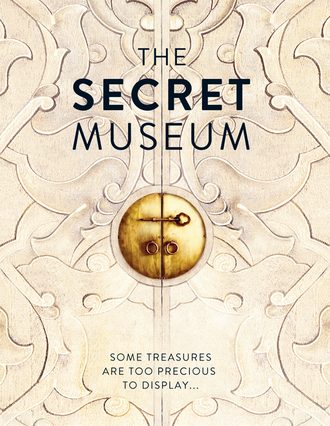
Полная версия
The Secret Museum


CONTENTS
INTRODUCTION
A GUTENBERG BIBLE ON VELLUM
HARRISON SCHMITT’S SPACE SUIT
THREE PIECES OF MARS
A PIECE OF NEWTON’S APPLE TREE
THE FIRST CULTIVATED PEARLS
LAMOUROUXIA VISCOSA SEED FROM MEXICO
THINGS BENEATH THE FLOORBOARDS
A BEJEWELLED CROSS
A HAIDA SHAMAN’S RATTLE
FRANCIS CRICK’S SKETCH OF DNA
TABLET K.143, SCHOOL EXERCISE BOOK OF ASHURBANIPAL, KING OF ASSYRIA
VLADIMIR NABOKOV’S BUTTERFLY GENITALIA CABINET
CHARLES DICKENS’S FELINE LETTER OPENER
THE HEART TOKEN
ITEM RDMSC RD 1/1/1
AUGUSTE PICCARD’S BALLOON GONDOLA
JASON JUNIOR
UNDERWATER PAINTING BY ZARH PRITCHARD
ANGLERFISH COUPLE
THE FIRST GIRAFFE IN FRANCE
A GREAT AUK EGG
A GLASS JELLYFISH
THE INTERIOR OF VASA
FLAG FROM THE BATTLE OF TRAFALGAR
A BLUE WHALE
LOGBOOK OF THE KON-TIKI EXPEDITION
WALLY HERBERT’S SLEDGE
SONG 21
EXU BOCA DE FOGO
LIVINGSTONE AND STANLEY’S HATS
HAWAI’IAN FEATHER HELMET
THE LIENZO OF TLAPILTEPEC
MIXTEC TURQUOISE MOSAIC SHIELD
ALICIA (1965–67) MURAL BY JOAN MIRÓ AND JOSEP LLORÉNS ARTIGAS
AN UNOPENED BOOK
THE DIAMOND SUTRA
TIBETAN ABBOT’S COSTUME
TWO GOLDEN BEES, FROM THE GLASS PALACE IN BURMA
SLAP-SOLED SHOES
BLOOD’S DAGGER
TELL HALAF SCULPTURES
ALFRED NOBEL’S WILL
SKETCHES OF CHURCHILL
FRIENDSHIP BOOK
TORAH ARK CURTAIN
THE TOWER OF THE BLUE HORSES BY FRANZ MARC
CHRISTMAS TELEGRAM FROM AGENT ZIGZAG
A CHANNEL ISLANDS PILLAR BOX
BUCKINGHAM PALACE SWITCHBOARD
A LEAF OF GOAT EYE STAMPS
THE TOOLS THAT BELONGED TO QUEEN VICTORIA’S DENTIST
SKULL OF A TAPUIASAURUS MACEDOI
HANDAXE FROM HOXEN
A SERIES OF PAINTINGS BY OZIAS
THE SPAULDING COLLECTION OF JAPANESE PRINTS
VAN GOGH’S SKETCHBOOKS
BOX IN A VALISE BY MARCEL DUCHAMP
MARGARET FONTEYN’S TUTU
STANLEY PEACH’S CENTRE COURT DESIGNS
ORIGINAL DRAFT OF ‘AULD LANG SYNE’, ROBERT BURNS
ACKNOWLEDGEMENTS
PICTURE CREDITS
COPYRIGHT
ABOUT THE PUBLISHER
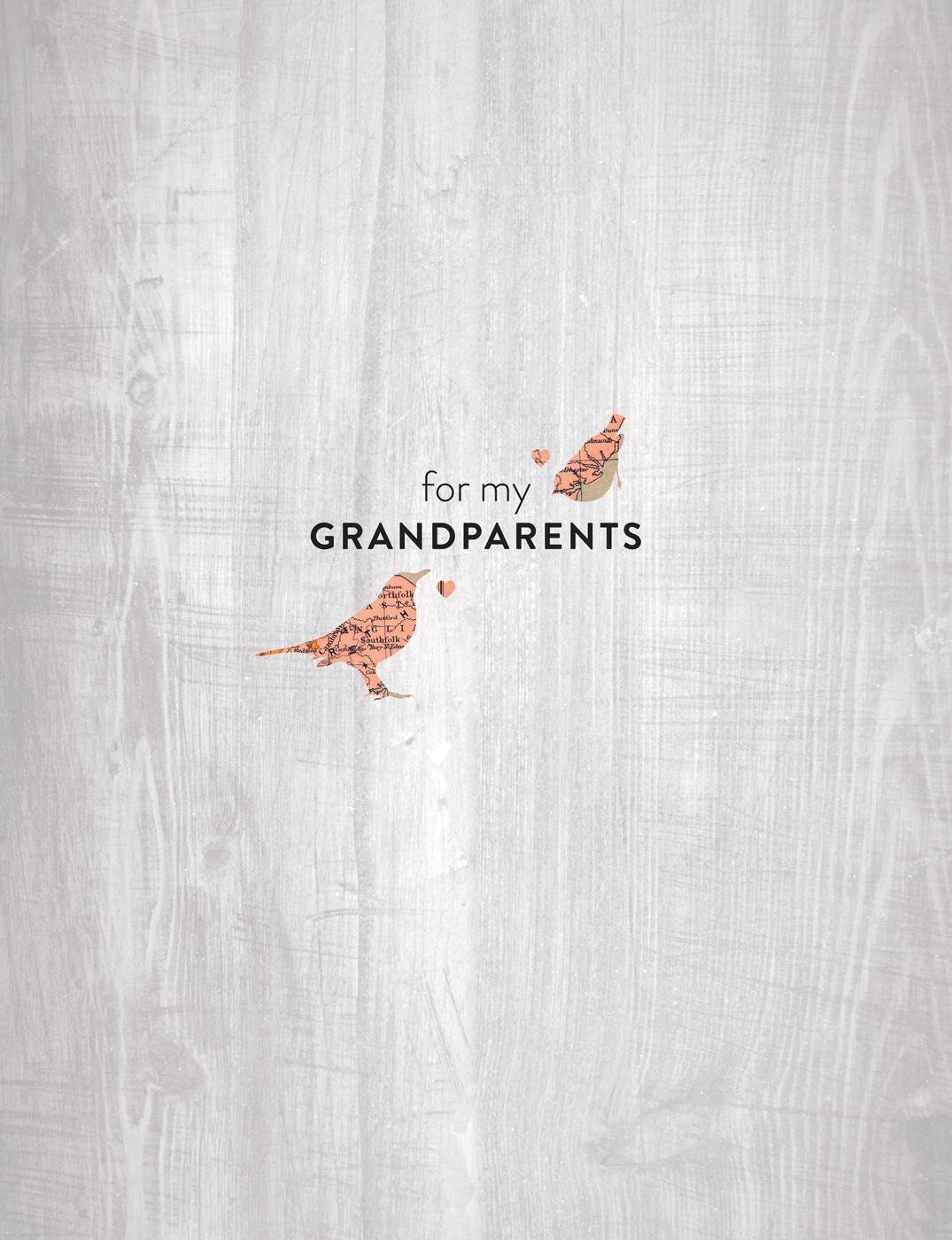

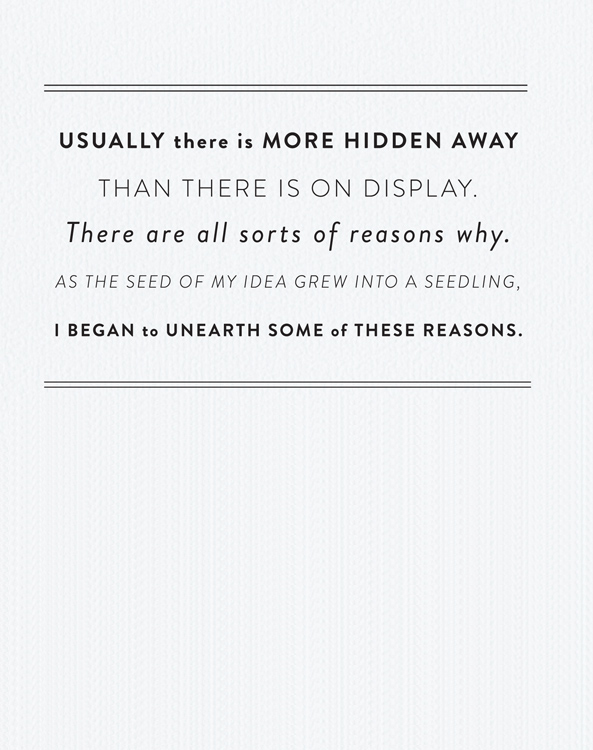
SINCE 2002 I HAVE BEEN a writer and researcher for the television show QI. I also co-write a weekly QI column in the Saturday Telegraph and research a Radio 4 programme called The Museum of Curiosity. One of the things I’m often asked about QI is ‘How do you find the script questions?’ My answer is that I find a lot of ideas in museums – they’re a great place to go to learn, to get fresh ideas and to wander around in beauty. I used to visit the public areas, notebook in hand, scribbling down question ideas without realizing that, behind closed doors, most of each museum’s collection is hidden away from public view.
That changed when two fish curators from the Natural History Museum invited me to look around their fishy realm. I went excitedly, thinking it would be fun but really with no idea of quite how surprising and wonderful the behind-the-scenes fish collection would be. We spent three hours pushing open high-security doors and peering into tanks to marvel at specimens like Archie, the giant squid (and his tank mate, the even bigger colossal squid), who is too big to fit in the galleries, and sharks that inspired super-fast Olympic swimwear.
The curators showed me their favourite specimens that live among shelves of glass jars containing fish from every country on Earth. One of those specimens, an anglerfish couple, made it into the pages of this book. The endless shelves full of fish have been collected over the course of a century: Darwin’s collection from the Beagle is on a shelf not far from some rare fish from Borneo that the current curators had picked up on a fishing trip earlier that month. The space was zinging with possibility and stories, and I caught the bug for backstage.
As I emerged into the light of the museum itself, the seed of the idea for a book landed lightly upon me. I began to wonder if all museums were like this – housing things that only researchers and curators know about? A few days passed, the seed began to unfurl its roots and I decided to call a few more museums to ask them whether they had any treasures behind the scenes that they rarely display. It turned out that they did. The Science Museum told me about a huge ex-RAF airbase in Wiltshire, filled with enormous objects they don’t have space to display. The Foundling Museum has a collection of tokens left by the mothers of foundlings, hidden away in an archive. The Van Gogh Museum in Amsterdam cares for van Gogh’s sketchbooks, which they have never exhibited. Writing this a year later, looking back, it seems funny that I had to ask the museums the question. Of course, almost all museums have a storage collection filled with objects that are an integral part of the collection but are rarely put out for exhibition.
Usually there is more hidden away than there is on display. There are all sorts of reasons why. As the seed of my idea grew into a seedling, I began to unearth some of these reasons. Sometimes, objects are too precious to exhibit and for their own security need to be kept securely in a vault. This was the case with a bejewelled cross that lives in a museum in Brazil, in a dangerous part of Salvador de Bahia. Very often the treasures are too fragile to show, so it is best to keep them in a climate-controlled, dark environment because lengthy exposure to light would destroy them. At the Peggy Guggenheim Collection in Venice I saw a piece by Duchamp in ‘the bunker’ that is very rarely put out in the light of the galleries and lives with other fragile treasures, protected by covers which the museum nicknames ‘pyjamas’.
Sometimes it’s a question of size – there isn’t space for enormous objects in a museum and it’s impossible to effectively display tiny, microscopic specimens. It’s also a matter of not having enough space – there isn’t room to show everything. Natural History museums keep between 90 and 99 per cent of their specimens – a vast array of species collected over centuries across the Earth – as reserve collections, behind closed doors, ready for researchers, conservation groups or climate change specialists to delve into. Like the fish collection at the Natural History Museum, this is where the action happens.
No matter what the subject of the museum or why each object is in a reserve collection, everything that isn’t on display is valued in its own right and conserved for the future. Usually you can see anything you would like to, if you ask the museum to see it but, if you’re at all like me, perhaps you didn’t know that all of these treasures were there. Once I realized quite how much lay unexplored away from the public space of each museum I felt compelled to take some of these treasures that lurk in cupboards, basements and vaults and lift them into the light and onto the pages of this book.
The seedling of this book was fed and watered with the help of curators and conservators at each museum: keepers of the keys to the hidden realms. Each time a door was unlocked and a curator ushered me into the collection they knew so well I found myself in a world of stories, lucky enough to be with the one person on Earth who could best explain the significance of the objects that surrounded us.
I picked things intuitively, selecting those I liked or those that provoked an emotional reaction in me. Sometimes curators suggested precious things in storage that they would rarely display, other times the curator and I roamed freely around the storage areas until I found something that looked interesting, and the curator and I would then research the item’s history. If you were to write this book you would no doubt pick totally different treasures, but these are some of the things I discovered that I think are wonderful.
Whatever you’re into, there ought to be something here for you: take your pick – what about a spacesuit covered in moon dust? Or maybe three pieces of Mars, kept in storage at the Vatican Observatory? A letter opener made from the paw of Charles Dickens’s cat? A friendship book written in by Anne Frank? Perhaps a tutu danced in by Margot Fonteyn?
Delve in and have a look around. I hope you will find ideas, people, stories and treasures that will fascinate and inspire you.
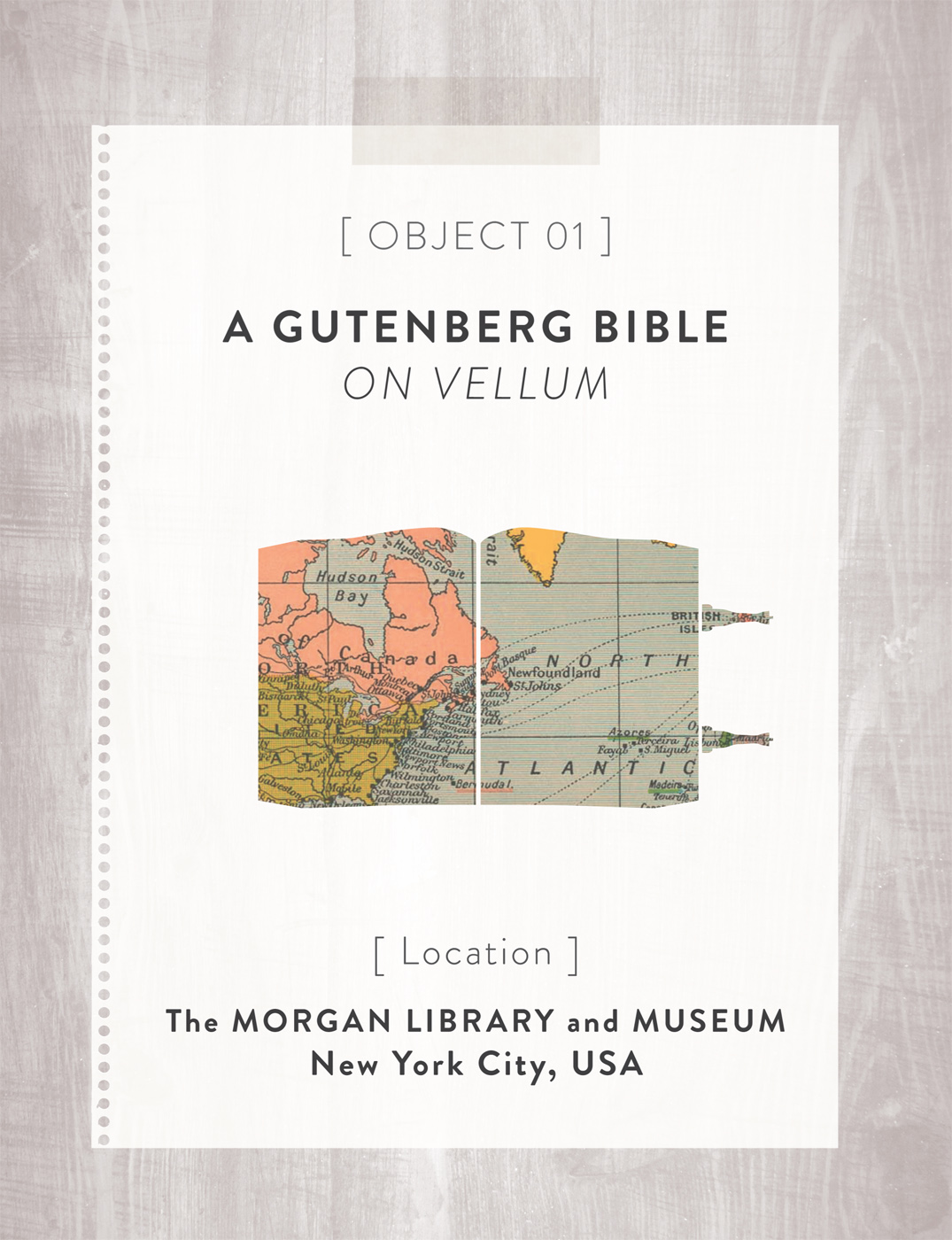

IF THE MUSES LOOK FOR heaven here on Earth, I think they must find it in museums. Originally more like libraries, museums were conceived as ‘shrines for the muses’, filled with books. It was only in the seventeenth century that they became showpieces for wonderful objects. The Morgan Library and Museum is a museum in all senses of the word: a library, as the first museums were, a treasure chest of artefacts, as museums are today, and a gift to the muses.
The Morgan is in the former home of Pierpont Morgan (1837–1913), one of the most brilliant financiers America has ever seen and a generous and devoted patron of the arts. Each day, hundreds of people wander around Pierpont’s sumptuous library, built for $1.2 million, with a mantelpiece and ceiling sourced from Rome. They marvel at the books and artwork on show in his home and his library, which his banking colleagues dubbed ‘The Up-town Branch’.
Only a fragment of the work at the Morgan is on display. Most of their treasures are beneath the buzzing city of New York, resting in three floors of quiet, humidity-controlled rooms carved out of the rock. The long rooms are filled with grey, steel-enclosed safes, each one fiercely protective of its delicate contents: ideas that shaped the history of human feeling and thinking, touchstones of our culture.
Few people know they are there, waiting, deep in the calm, beneath Manhattan, but I imagine the muses love to flit around there, exulting in the hidden treasures: the only manuscript of Paradise Lost, dictated by the blind poet Milton, notebooks containing lyrics by Bob Dylan (the first moment ‘Blowing in the Wind’ came to Dylan is scribbled in pencil), neat scores by Mozart and Debussy and messy scores by Beethoven, drawings by Dürer and Picasso and hundreds of ideas produced by some of the most creative people that have ever lived. The muses laugh gleefully, for they have been listened to. The archives of the Morgan are proof that we humans can sometimes hear the quiet calls of the gods of art and find the skill to translate this calling into physical form.
Only the curators of the Morgan go down to the archives. They swap things in and out of display and bring items requested by people who want to see them up to the beautiful Morgan reading room. I came into the reading room to view a Gutenberg Bible, the first book ever printed in the western world. The Morgan owns three copies, more than any other institution in the world. There are only 50 or so copies in existence, and only 12 of those are on vellum. I had a morning to myself with the Morgan’s copy of the Gutenberg Bible on vellum.
Inge Dupont, one of the librarians, brought it up out of the vaults of the Morgan and there it was, in two enormous volumes – Old and New Testament. It was sitting on a trolley, which Inge and her colleague wheeled across the reading room to a desk. Together, they heaved the New Testament up on to a lectern. They handed me a piece of acid-free card with which to turn the pages and asked me to turn them holding the bottom right-hand pages only. Then they left me alone with one of the most valuable books in the world. It was sublime. I felt so lucky. I’d seen a copy on paper in the New York Public Library, but it was behind glass. This civilization-changing beauty was here in my hands.
I stood up to read it. Gutenberg created the Bibles so they could be read in monastery refectories, by lots of monks at the same time, so they tend to be enormous. This one was huge, and the vellum pages were stiff to turn, so I had to be standing above the Bible to turn a page. Standing up also seemed appropriate. When the first Gutenberg Bible to come to the United States arrived in New York, the officers at the Customs House were asked to remove their hats on seeing it, for the privilege of viewing a Gutenberg Bible is available to so few.
As I turned the pages, I was in a vortex, transported to Johannes Gutenberg’s workshop in Mainz, Germany, in 1454; to a room in which Gutenberg paced up and down, watched by his investors, helped by his assistants, combining ink and calf’s leather and his new invention, a printing press which held 270 type moulds of letters, to create 180 Bibles, which would begin a revolution in the way we receive and spread information.
Gutenberg worked hard. In fact, I have reason to believe he slept in his workshop, or at least came to work in the clothes he slept in at home. When I visited Harvard’s Natural History Museum’s entomology collection, their curator showed me an ant collected and preserved in vodka at a dinner party hosted by Stalin. When I asked him if he had a favourite item in his collection, he said there was one creature he wished he still had – Gutenberg’s bedbug. He told me how the phone had rung one day and it was the Boston Library, who said, ‘We’ve found a creature in our Gutenberg Bible, can you check it out for us?’ They sent the creature over so the curator could have a good look. He called them back later that day to say, ‘You’ve got a bedbug belonging to Mr Gutenberg.’ He gave the bug back to the library and never saw it again.
Even if Gutenberg did lose a lot of sleep while creating movable type and his Bibles, it was certainly worth it. He invented a new way of communicating, transformed the rate of literacy throughout the western world and started a revolution that remained unprecedented in human culture until the arrival of the internet in our lifetime. Before Gutenberg, the only way to create a book was by hand. In the west, this was the job of monks, who worked in scriptoriums in chilly monasteries. They probably had inky hands, sore backs and, by the end of each day, rather tired eyes. Yet they laboured on, spreading the good word. In the east, a Chinese blacksmith, Pi Sheng, had invented movable type four centuries earlier, but his invention hadn’t been adapted for use by a machine. In China, type was imprinted on the page by hand rubbing, which made the process only slightly more efficient than the copying by a medieval scribe.
When Gutenberg put all the ingredients together, crucially, with the invention of his type mould, and began printing his Bibles, a lot of scribes soon found themselves out of a job. Now, a book could be created more quickly, by machine. This machine could, amazingly at the time, create as many identical copies of the same text as you needed. Suddenly, anyone lucky enough to own a Gutenberg Bible, no matter where they were in the world, could turn to page 20 and read from the same text.
Just imagine the work that went into this one book. For years, Gutenberg toiled in secret in a little hamlet downriver from Strasbourg. He couldn’t risk anyone finding out the techniques he was developing. He shaped each of the 200 or so letters he needed for a Bible out of metal, by hand. Then, using the type mould, he made copies of the letters. They were set into a form, covered with ink made in his workshop and pressed, using a machine he may well have adapted from a wine press, on to either vellum, as with this Bible, or paper. Vellum – calfskin – is more precious than paper, which itself was worth almost as much gold. Gutenberg wanted all his Bibles to be printed on vellum, but it was just too expensive.
The ink shimmers, because it contains metal compounds. It’s set off beautifully by its decoration in rich golds, blues, greens and reds. As soon as a page of the Bible was printed, it was handed over to an illustrator in Gutenberg’s home town who illustrated the initials, and then to another in Bruges who completed the intricate decoration of the Bible’s columns and borders. When the book was complete, it was bound. It came out of the workshop and changed the world. In just 50 years, the number of books printed with movable type went from zero to 20 million.
When, nearly five centuries later, Morgan bought the manuscript of Pudd’nhead Wilson from Mark Twain, the author told Morgan, ‘One of my highest ambitions is gratified – which was to have something of mine placed elbow to elbow with that august company which you have gathered together to remain indestructible in a perishable world.’ This is why the Morgan Library and Museum is so special. The ‘august company’ really is wonderful and each precious work is safe in the quiet vaults below Manhattan. No wonder the muses love this place so much.
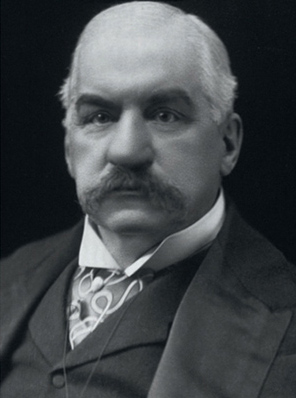
[Pierpont Morgan (1837–1913)] Pierpont Morgan was a brilliant financier and an avid collector of rare and precious things. His son J. P. Morgan, Jr gave his father’s extraordinary library to the public in 1924, and now anyone who visits can see a selection of his art, rare books, manuscripts, drawings, prints and ancient artefacts that are on display.
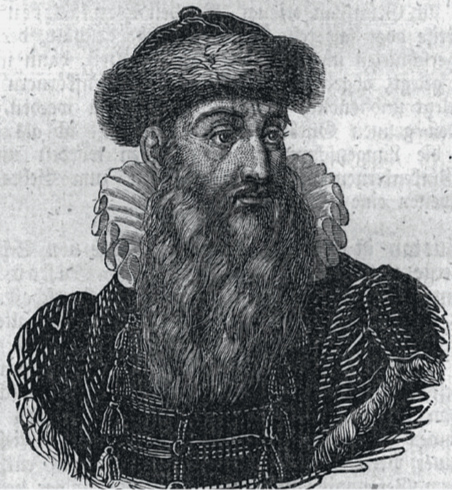
[Johannes Gensfleisch zur Laden zum Gutenberg (1398–1468)] Gutenberg invented movable type and so introduced printing to Europe.
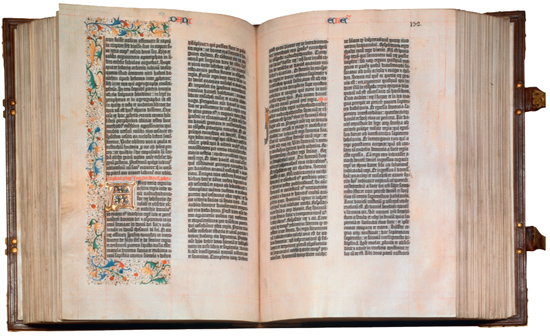
[The Morgan Library’s Gutenberg Bible on vellum] I had an afternoon alone with this world treasure, in the reading room of the Morgan Library and Museum.

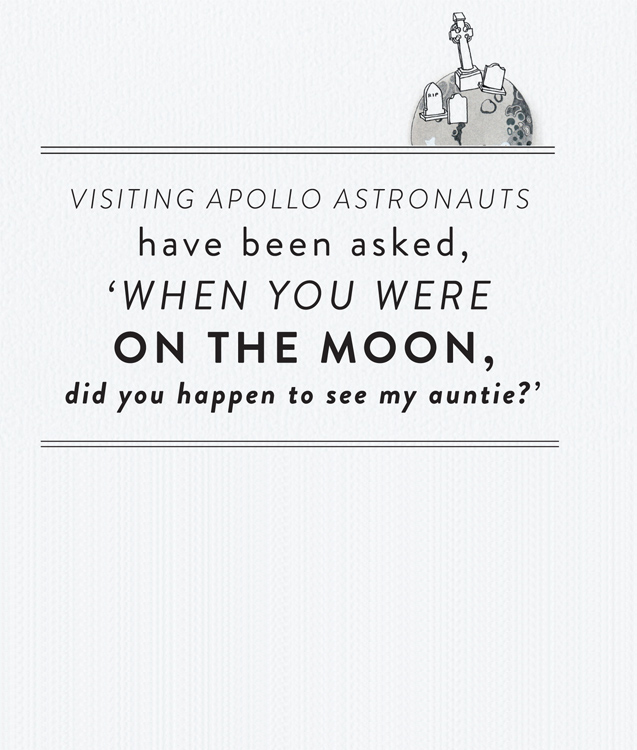
I ALMOST FORGOT TO LOOK at the moon today.
Those are the words on the first painting I ever chose for myself. I saw it in a little arty café in Cochin, Kerala, India. At the other end of the subcontinent, in Nepal, people think the dead live on the moon. Visiting Apollo astronauts have been asked, ‘When you were on the moon, did you happen to see my auntie?’
Since my trip to the storage facility of the National Air and Space Museum, when I look at the moon I see hundreds of spacesuits, lying quietly in the cold, and two knees, thickly coated in moon dust.
When I visited the museum, the spacesuit storage facility was located, rather appropriately, in Suitland, Maryland. To get there, I took a Metro from central Washington DC and then walked along a highway, melting in the summer heatwave and being hooted at by people who were probably wondering what on earth I was doing there. Eventually, I arrived and was greeted by the museum collection conservator, Lisa Young, and curator, Cathleen Lewis. They opened a spacey, silver door, walked us into a middle room, like an airlock, and then into a room filled with spacesuits in stasis.
It’s a cold (18°C/65°F), narrow room lined with hundreds of headless bodies on metal bunk beds. Each body is covered with a sheet, as if it were a morgue for spacesuits (only these suits are not ‘dead’, they’re being preserved for future generations). In total, there are 287 suits in the collection, but only a little more than half of these are in storage at any time. The others are on display or on loan to other museums around the world. Each one is referred to by the name of the astronaut who wore it, and each is displayed on a mannequin and laid out flat on its back on the metal bunk beds, five to six bunks high. We pulled back a sheet and uncovered a body.
It was the spacesuit of Harrison H. ‘Jack’ Schmitt of Apollo 17, the only scientist to walk on the moon. His spacesuit is covered in grey dust, especially the knees. It looks like ash, but it is moon dust. The moon dust is the reason why this suit is not on display. Schmitt is a geologist. When the Apollo astronauts were in training, they went partying together. Schmitt would sit there among the pilots, talking about rocks. He was chosen for Apollo 17, the final manned mission to the moon, because scientists at NASA were going bananas. They couldn’t believe that, of the 12 men who had walked on the moon, not one was a scientist.
There had been some lighthearted scientific experiments – playing golf, dropping a feather and hammer at the same time to see which would fall first (they fell at the same time), and some lunar samples had been brought back to Earth, but no one who could make snap scientific decisions on the moon had ever been up there. As a geologist, Schmitt could do, in another world, what he did all the time on the Earth – dig to find out more about what the planet was made of. The scientists at NASA insisted that Schmitt was given a seat.
Hours into the return trip, the crew of Apollo 17 took one of the most famous photographs of all time, a photograph of our planet called ‘The Blue Marble’, of the whole Earth lit up by the sun. Africa was in daylight, and Antarctica was lit by the December solstice. Although NASA credits the whole crew with taking the photograph, as they were all using the camera, passing it between them, it’s acknowledged now that the iconic image was the work of Schmitt.
Much later, he and Gene Cernan left Ronald Evans behind in the command module and landed the lunar module in the Taurus-Littrow valley of the moon. It was December 1972. They stayed on the moon for three days, driving 16 kilometres across the light side. They saw lunar plains, took measurements of the gravitational field of the moon, passed steep mountains, drove around small craters and stood beside enormous boulders and glittering rocks.
Whenever they saw interesting things they jumped out to gather treasures to take home. They were ecstatic, especially Schmitt. He began singing, ‘I was strolling on the moon one day,’ skipping, bouncing and humming happily on his way. Gene Cernan, not a geologist, sung along too.
In total, they brought back 109 kilograms of rock. One of these samples is named Troctolite 76535. It formed when the moon was only 300 million years old and it has a faint magnetic field, suggesting that the moon itself may once have had one. Troctolite rock is found on Earth in several places, including Cornwall, the Isle of Rum in Scotland and western Australia. Schmitt also collected orange soil, which suggested the possibility of water, and maybe even life, at some point in the moon’s history.


